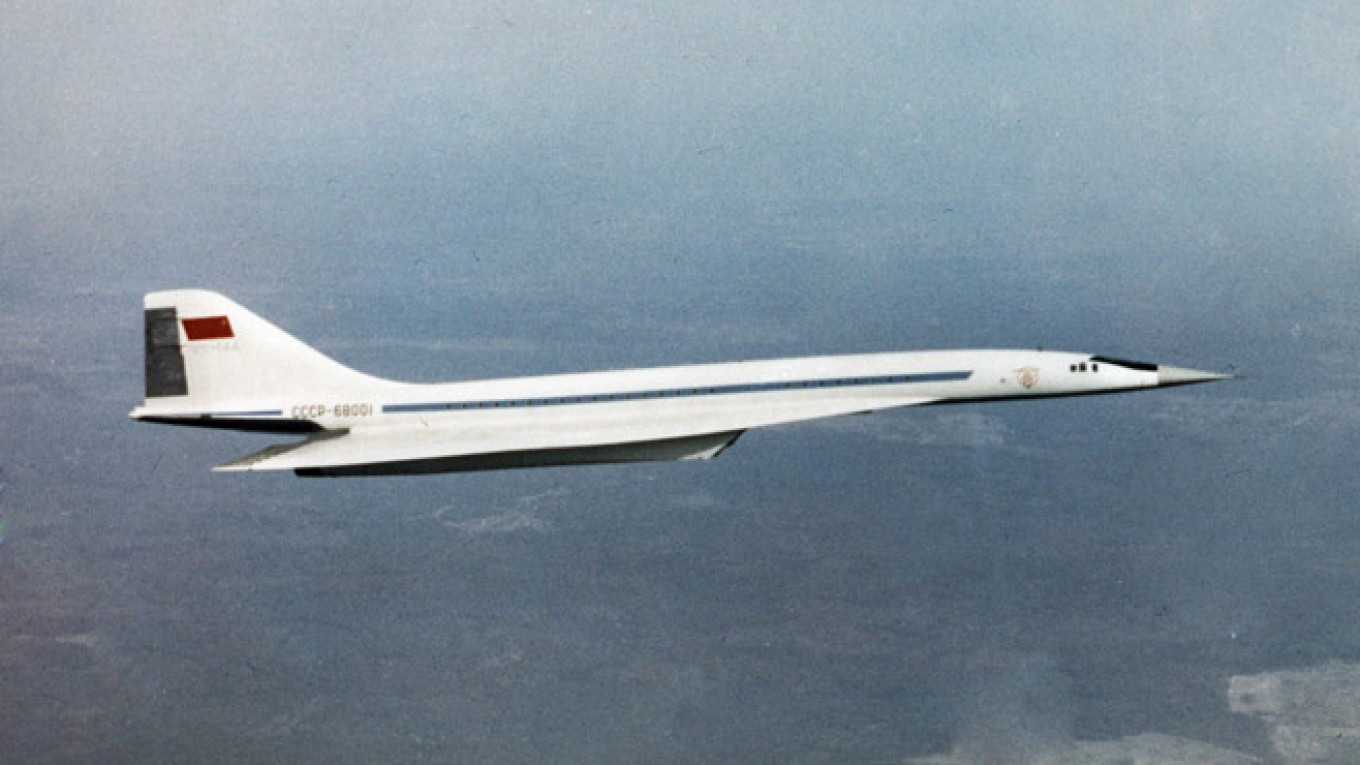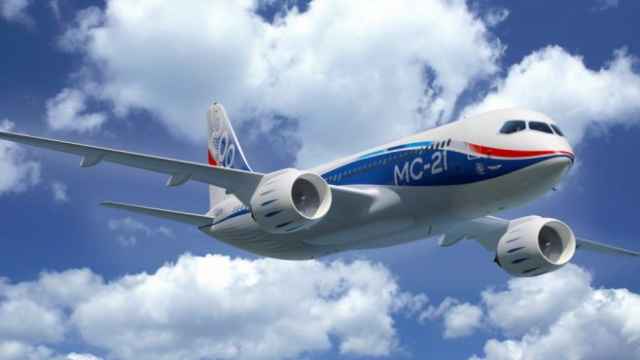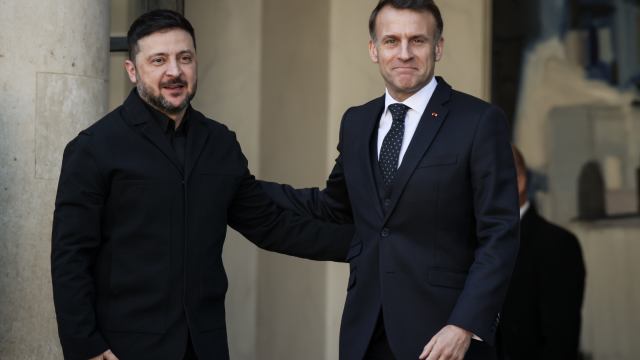After the Boeing planes flown by Russia’s first low-cost airline, Dobrolyot, were grounded by EU sanctions in July, Russian officials have revived their efforts to stimulate production of Russian civilian airliners.
Dobrolyot’s plane-leasing agreement with an Irish company was derailed when it was sanctioned for flying to Crimea, which Russia seized from Ukraine in March. The move highlights the vulnerability of Russia’s airlines: 90 percent of places flown by Russian airlines are Boeings and Airbuses leased from the West. Most of the major carriers fly to Crimea.
In response, Deputy Prime Minister Dmitry Rogozin, who oversees the defense industry, has championed the transition to domestic airliner designs. Two weeks ago, Rogozin said the government was considering launching a new airline “to ensure regular air travel to Crimea with a domestic fleet.”
Russia’s government and president have lent their weight. President Vladimir Putin proposed earlier this month to restart production of certain Russian airplane designs to be used by Russian airlines. On Wednesday, the government said it would backstop a $400 million loan to help develop Russia’s next-generation MC-21 airliner.
Local airlines opt for Boeing and Airbus jets because they are safer, more reliable, use less fuel and can be easily leased. The Soviet Union was a plane-making powerhouse, but a long funding drought has left Russia’s civil aviation industry weak.
To achieve self-sufficiency in aircraft manufacturing capacity, Russia would have to find domestic alternatives to passenger planes capable of servicing short range routes under 5,000 kilometers, medium-haul routes under 10,000 kilometers, and long-range routes under 15,000 kilometers.
So what will Russians fly in a hypothetical post-Boeing and Airbus world?
The Moscow Times has examined the options.
Ilyushin Il-96
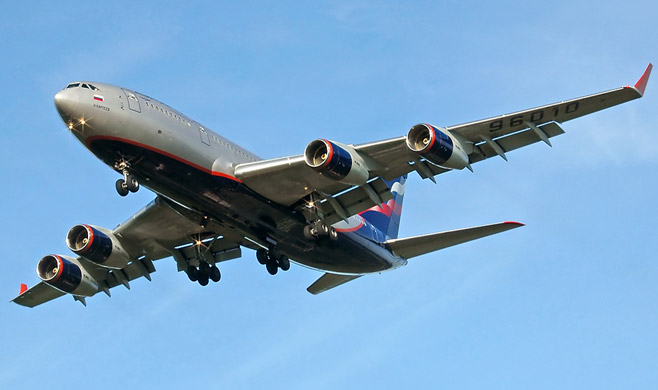
Ilyushin Il-96
The Il-96 is Russia’s only long-range civilian airliner. It is an advanced upgrade of the Soviet Il-86, the only long-range wide-body airliner developed by the Soviet Union. This would be the only viable domestic replacement for the Boeing 777 and Airbus A330 airliners that fly internationally from Moscow. The Il-96 is currently operated exclusively by a special division of Aeroflot subsidiary Rossiya Airlines for Russian government flights. Aeroflot no longer flies the aircraft, having put their six Il-96 planes sale in April 2014, according to business daily Vedomosti.
President Vladimir Putin’s “Air Force One” analogue is a specially modified Il-96.
Unit Cost: $40 million-$50 million. The A330 costs about $220 million, and the Boeing 777 costs anywhere from $260 to $320 million.
Seating Capacity: 240-350 passengers, depending on the model and seat configuration. The Il-96 stacks up well to the Airbus A330, which can typically seat about 250-350 passengers. The Boeing 777, which has several variants with longer bodies, can fit anywhere from 300 to 500 passengers.
Number Produced: Only 29 Il-96 planes have been constructed since its introduction in 1993, while its Boeing and Airbus rivals have rolled out over 1,000 of their respective models.
Range: 10,000-15,000 kilometers, depending on payload and fuel load. This is on par with the range of both the A330 and Boeing 777.
Sukhoi Superjet 100
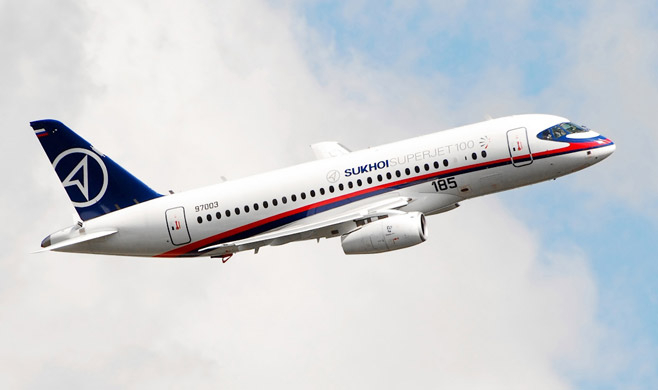
Sukhoi Superjet 100
The Superjet 100 is built by Sukhoi Civil Aircraft in collaboration with U.S. and European partners to compete in the medium-haul airliner market. The 110-seat plane entered commercial service in 2011.
Though Russian-built, the Superjet 100 is heavily invested with Western technology. It was developed as part of an international joint-venture between the Sukhoi design bureau and several Western aerospace firms. This makes the Superjet potentially vulnerable to future sanctions. Last week, United Aircraft Corporation, which owns Sukhoi, said it was expanding production of the Superjet, denying that tensions had any impact on supplies of foreign components.
Though sales have been slow, the Superjet has found buyers both inside and outside Russia.
The Superjet’s primary competitors are the upcoming Canadian Bombardier CS100 jet and Brazil’s Embraer E-Jet.
Unit Cost: $35 million. A Bombardier CS100 costs $62 million, while E-Jets cost anywhere from $28 to $47 million.
Seating Capacity: 110 passengers. The CS100 seats the same, and the E-Jet series can fit 80-110 passengers depending on the model.
Number Produced: 68 have been built so far, with 25 of them rolling off the assembly line last year. Sukhoi says it plans on building 40 in 2014, and 50 in 2015. Production of the CS100 has yet to begin, as the plane is still being tested. Embraer has produced more than 1,000 E-Jets.
Range: 3,000-5,000 kilometers, depending on the model. The maximum range of a CS100 will be about 5,000 kilometers. The E-Jet has slightly shorter range, capping out around 4,500 kilometers on certain models.
Tupolev Tu-204
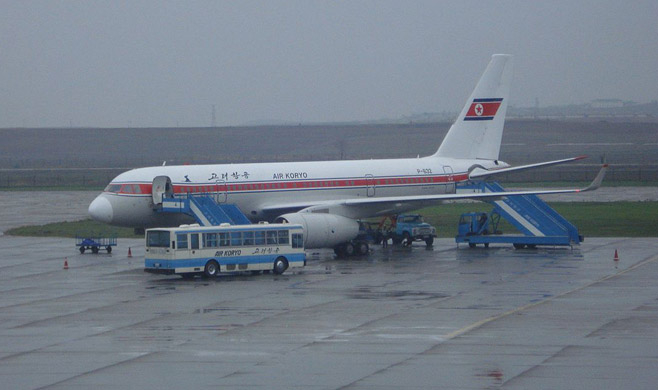
Tupolev Tu-204
The Tu-204 was commissioned in the late 1980s to match the Boeing 757 regional airliner. Last week Deputy Prime Minister Dmitry Rogozin proposed expanding production of the Tu-204 to be used by Russian airlines and ease their vulnerability to Western sanctions targeting leasing agreements for Airbus planes. It would likely fulfill the role of an Airbus A320 or Boeing 737.
Unit cost: $35 million. A Boeing 737 or Airbus A320 costs around $75-95 million depending on the model.
Seating Capacity: 160-200 passengers, depending on the layout. An Airbus A320 seats 150-220 people, depending on model, while the Boeing 737 seats 160-215.
Number Produced: 76 Tu-204s have been built since the 1980s. Boeing has built almost 5,000 737s since 1996, and Airbus has built more than 6,000 A320s and related models since 1986.
Range: 4,500 kilometers. This is a little lower than the A320, which has a range of about 5,000 kilometers, and the Boeing 737, which can have a range of 5,000 kilometers to 10,000 kilometers, depending on the model.
Antonov-148
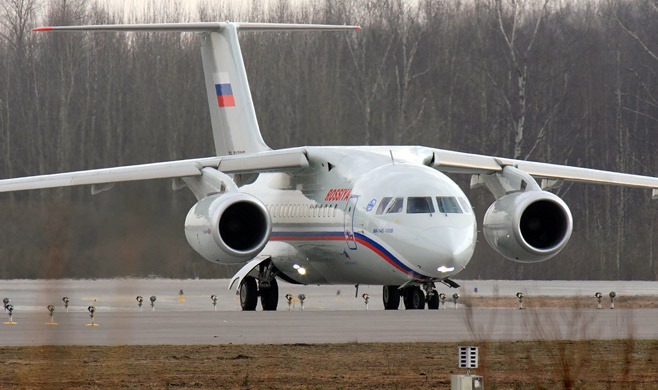
Antonov-148
A Ukrainian airplane, the Antonov-148 first flew in 2004 and went into commercial service in 2009. It is primarily operated by Rossiya Airlines and Ukraine International Airlines. Tensions between Ukraine and Russia might mean the An-148 is off the table, but strong ties between Antonov and its Russian counterparts may keep the company in Moscow’s orbit. The plane is another rival to the Superjet, with a similar seating capacity, cost and range. It’s advantage over the Superjet is a mature design.
Unit Cost: $24-30 million.
Seating Capacity: 70-90, depending on the layout.
Number Produced: 33
Range: 2,000-5000 kilometers, depending on the model.
Ilyushin Il-114
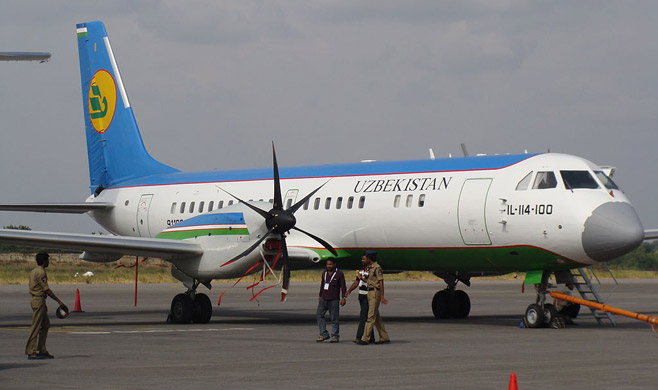
Ilyushin Il-114
According to President Vladimir Putin, rebooting production of the Il-114 — a small, propeller-driven regional airplane — is a preferred option for shoring up domestic vulnerabilities. The only problem is that the plane has been out of production for two years. Only 20 were ever built, and they are all owned by Uzbek airlines. The plane, although designed by the Ilyushin design bureau, was built in Tashkent. Putin proposed two weeks ago to commission feasibility studies on the possibility of mass-producing the Il-114 at the Aviakor aviation plant in Samara.
The main competitors to the Il-114 are the Bombardier Dash 8 — which costs anywhere from $13 million to $35 million, depending on the model — and related small propeller driven aircraft.
Unit Cost: Out of production, not clear.
Seating Capacity: 64 passengers, while the Bombardier Dash 8 can hold anywhere from 35 to 86 passengers, depending on the model and layout.
Range: 2000 kilometers, comparable to the Bombardier Dash 8.
Irkut MC-21
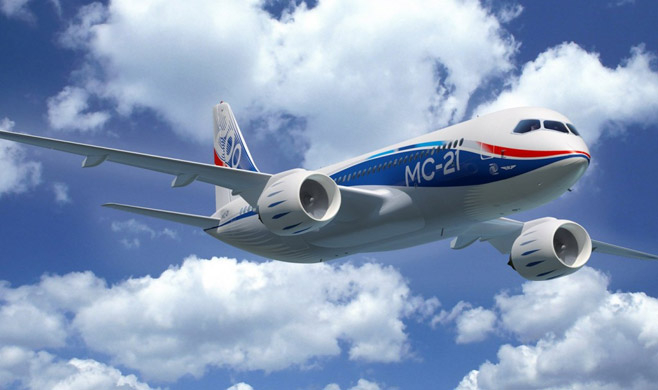
Irkut MC-21
Still on the drawing board, the MC-21 project is supposed to supply Russia’s next-generation series of mid-range commercial airlines. There are three variants of the MC-21 under development, each one with a different body length and passenger capacity. The designation MC-21 means “airliner of the 21st century”
The MC-21 is a twin-engine, medium-range airliner intended to replace the aging Tupolev Tu-154 and Tu-204. It will be a competitor to the massively successful Airbus A320 and Boeing 737 aircraft.
The Russian government on Wednesday backed a $400 million investment from state-lender Sberbank to Irkut for the project’s development.
The first prototype of the MC-21 was initially supposed to fly this year, but the date has been pushed back to 2015. Production models should hit the market by 2017, assuming there are no further delays in the project.
The MC-21 would be a competitor to the Airbus A320.
Unit Cost: Estimated around $70 million. In February news agency RIA Novosti reported that $4.6 billion will be spent on its development, which should be completed by 2017. The sum will be split between government and private investment.
Seating Capacity: 130-230 passengers, depending on the model
Range: 5,000 kilometers
Tupolev Tu-144
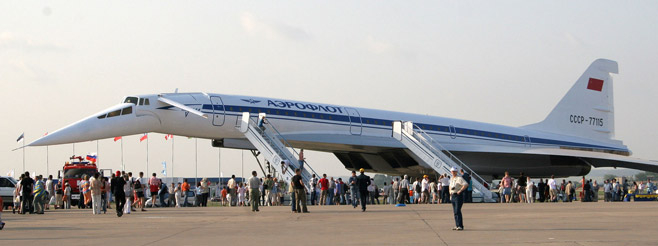
Tupolev Tu-144
If the situation returns to full-fledged Cold War, aviation geeks may hope to see a revival of the Soviet answer to the Anglo-French Concorde supersonic airliner, the Tu-144.
Aside from passenger routes, the Tu-144 served other uses. For example, the Soviet space program used the sleek jets to train pilots for their aborted Buran space shuttle program. Later, in the 1990s, NASA purchased one for high-speed aerodynamic research.
But the plane has been out of commercial use for some time, and it is extremely unlikely that anyone would be able to start production.
Seating Capacity: 140 passengers
Number Produced: 16
Range: 6,000 kilometers
Top Speed: As one of the only two supersonic passenger planes ever built, the Tu-144 was fast, capable of reaching Mach 2.15, about 2,633 kilometers per hour. The top speed of a Boeing 737 is a mere 876 kph.
A Message from The Moscow Times:
Dear readers,
We are facing unprecedented challenges. Russia's Prosecutor General's Office has designated The Moscow Times as an "undesirable" organization, criminalizing our work and putting our staff at risk of prosecution. This follows our earlier unjust labeling as a "foreign agent."
These actions are direct attempts to silence independent journalism in Russia. The authorities claim our work "discredits the decisions of the Russian leadership." We see things differently: we strive to provide accurate, unbiased reporting on Russia.
We, the journalists of The Moscow Times, refuse to be silenced. But to continue our work, we need your help.
Your support, no matter how small, makes a world of difference. If you can, please support us monthly starting from just $2. It's quick to set up, and every contribution makes a significant impact.
By supporting The Moscow Times, you're defending open, independent journalism in the face of repression. Thank you for standing with us.
Remind me later.


